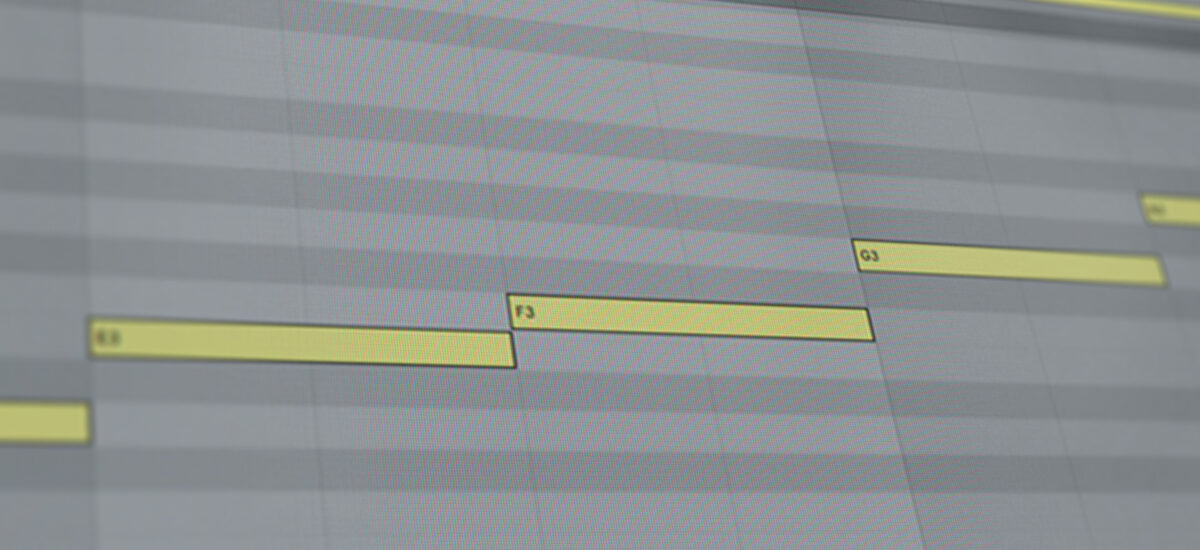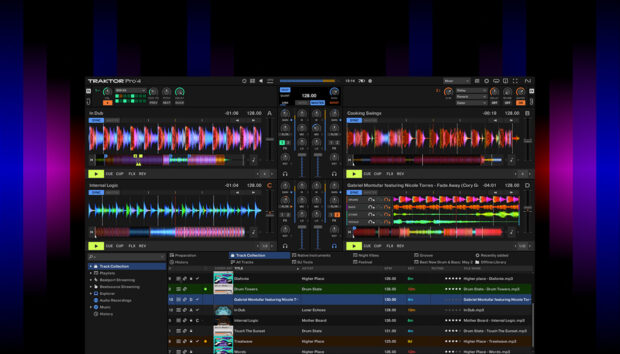
As a producer or beatmaker, you might assume that focusing on the beat or melody is where your focus should lie. But if you want to infuse variety and complexity into your music, you should gain a good understanding of chords and their role in music production/beat making.
Whether you’re looking for different types of guitar chords or piano chords, having some insight into chords and harmony will enhance your musicality – allowing you to create richer chord progressions, giving you a language to communicate with other musicians, helping you choose and flip appropriate samples, and more.
In this article, we’ll break down the different types of chords found in music, and explain how they can be used to enrich your work.
Jump to these sections:
Follow along with Komplete Start, a free bundle of professional-grade instruments, sounds, and effects to get you inspired.
What are chords in music?
A chord is a group of several notes played simultaneously to create harmony. Chords are a foundational part of harmonic language and help establish the emotional tone of melodies and music.
Typically, all the notes in chords are different pitches and combine to create a particular sound. Chords are essential to most genres of music as they help enhance melodies and create moments of emotional resonance.
To understand what chords can do for music, let’s listen to a melody on its own, and then layer chords underneath it.
Here is the first bit of melody from the jazz standard “My Funny Valentine” on its own:
Now let’s give that melody its intended chordal flavor:
Can you hear the difference the chords made to the melody? The melody of this song is beautiful, but the chords are what bring the melody to life and elevate it into something evocative.
Chords can be strung together into sequences that we call “chord progressions.” Chord progressions are popular across the genre spectrum – so whether you make EDM, pop, R&B, or anything in between, chords are an essential part of making music.
How are chords in music constructed?
Understanding chords in music will rely on knowing some music theory basics. If you’re not feeling confident about that, we recommend that you brush up on your knowledge of scales and intervals, and then come back.
Chords are made up of notes from scales like the major and minor scales as well as modes. Let’s take a look at the notes of a scale and see how that can help us create chords.
The C major scale is made up of the following notes:
C, D, E, F, G, A, B, (C).

We can create chords by taking one note from the scale and playing it at the same time as other notes from the same scale. The most basic forms of chords – called “triads” – are made of three notes. Creating a triad is as simple as taking one note from the scale (starting with the first degree, C), skipping the next note (D), and using the one after again (E). Follow the same formula once more by skipping the next note (F) and using the one after (G). We are left with C, E, and G which is a C major triad.
Another way of understanding how chords are made is by referring to the concept of intervals. In Western music theory, there are twelve possible notes that we can choose from. The distance between any two notes is measured by “quality” (meaning type) and the difference in semitones. Here is a visual reference of all the possible intervals.

Chords can be constructed by stacking intervals on top of each other, so this table will be important when we talk about all the different types of chords in music.
Different types of chords
Let’s take a look at the different types of chords that are common in music, starting with triads.
1. Major chords
A major chord is one of the most common chord types, made by stacking a note with a major third and a perfect fifth. It has a bright sound that some people think of as being “happy”. It sounds like this:
“Wake Me Up” by Avicii features mostly major chords, despite being in a minor key.
Remember that a song being in a minor key does not mean that it will only feature minor chords. Check out our guides on major and minor chord progressions, as well as the circle of fifths, to make sure you understand the concept of tonality in chord progressions.
2. Minor chords
Minor chords are as common as major chords, and are made up of a root note, minor third, and perfect fifth. It has a darker sound than a major chord and people sometimes refer to it as sounding “sad.”
“Glass Eyes” by Radiohead features minor chords prominently:
3. Diminished chords
Diminished chords are less common than major and minor chords but are a very effective means of creating tension. A diminished chord is constructed with a root note, minor third, and diminished fifth. It sounds unstable:
Listen to the diminished chord at 0:38 on “If I Ain’t Got You” by Alicia Keys. It is only present for a moment but it makes the resolution in the next chord that much more satisfying.
4. Augmented chords
Another unstable-sounding chord is the augmented chord. It is constructed with a root note, major third, and augmented fifth (which for our purposes, is technically the same as a minor sixth). It sounds like this.
You can hear an augmented chord at the start of “Oh! Darling” by the Beatles.
5. Seventh chords
Seventh chords are a group of chords that feature an extra note on top of triads. These “extend’ the triad upwards by including a seventh interval as well as the root, third, and fifth.
Because the word ‘seventh’ refers to an upper extension of the chord, there are even more types of seventh chords than there are triads.
Major 7ths are made of a root, major third, perfect fifth, and major seventh.
Minor 7ths include a root note, minor third, perfect fifth and minor seventh.
Dominant 7ths are made of a root note, major third, perfect fifth, and minor seventh.
Minor seven flat fives (m7b5) include the root, minor third, diminished fifth, and minor seventh.
“Snooze” by SZA is a great example of modern R&B that uses different types of seventh chords.
6. Extended chords
As we mentioned, seventh chords “extend” intervals beyond the fundamental ones found in triads. But extensions are not limited to sevenths. We can add any degree of the scale on top of triads and sevenths to create further chord extensions.
We don’t usually refer to chords as “major second” chords or “minor fourth” chords. Because these chords are “extending” past the initial octave of the scale we’re in, we add 7 to the degree of the scale that we include in the chord (7 because that is the number of notes in a standard scale).
If we include the second degree in the chord, we call it a “ninth” (2+7).
If we include the fourth degree, we call it an “eleventh” (4+7).
And if a sixth degree is present, we call it a “thirteenth” (6+7).
There are too many types of extended chords to list here. But chord extensions add color and variety to chords.
Here is a minor 9 chord, made up of a root note, minor third, perfect fifth, minor seventh, and major nine (the major second interval from the root note, but voiced up one octave):
Jazz music usually includes a wide variety of chord extensions. Can you hear the colorful extensions in “Afro Blue” by the Robert Glasper Experiment.
7. Suspended chords
These types of chords omit the third degree in the chord for either a second or fourth. This leaves the chord sounding neither major and “happy” nor minor and “sad”. Their ambiguity is what defines these chords.
Here is a sus2 chord which is made of a root note, major second, and perfect fifth.
And here is a sus2 chord which includes a root, perfect fourth, and perfect fifth.
You can hear a sus4 chord in Gnarls Barkley’s “Crazy” at 0:15 before it resolves to a major chord.
Start using different types of chords in your music
Chords create an emotional foundation which we can build affecting melodies on. Understanding different types of chords can empower you as a beatmaker or producer to make more dynamic and expressive tracks.
And if you haven’t yet, download Komplete Start for free and put colorful chords into your productions today.















